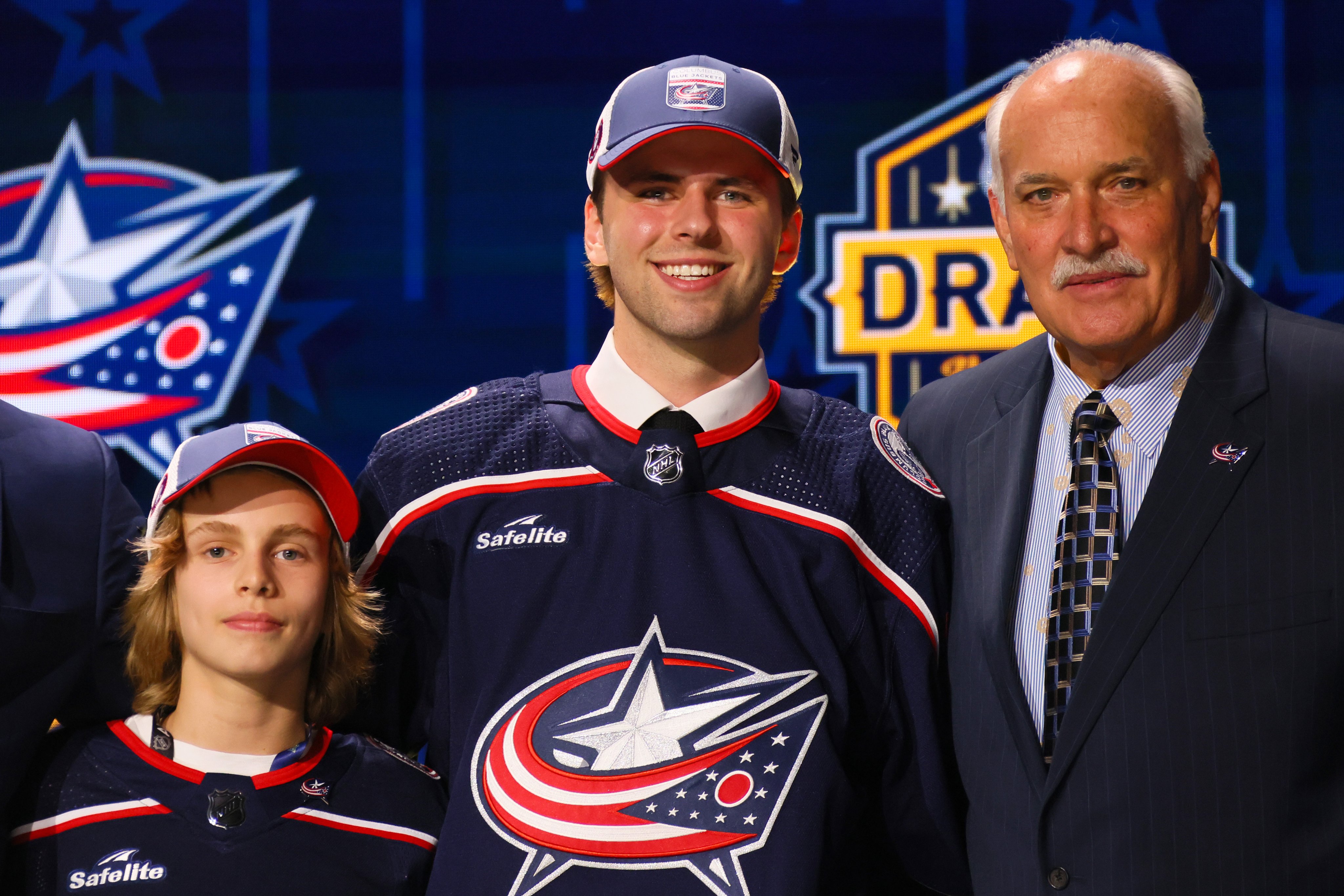Table of Contents
NHL Entry Draft In the dynamic world of professional hockey, the NHL Entry Draft stands as a beacon of hope and strategy for teams looking to secure their futures. Each year, franchises gather to select the brightest young talents from around the globe, hoping to find the next generation of superstars who will lead them to glory. The NHL Entry Draft is more than just a selection process; it’s a meticulously planned event that involves scouting, analytics, and a bit of luck. Let’s dive into how teams use this pivotal event to build their futures.

The Significance of the NHL Entry Draft
The NHL Entry Draft is the primary means through which teams infuse new talent into their rosters. Unlike free agency, which involves signing established players, the draft focuses on young prospects, typically between the ages of 17 and 20. These players have shown potential in junior leagues, college hockey, or international play, but their future impact on the NHL stage is yet to be determined.
A Foundation for Long-Term Success
Drafting well can set a team up for long-term success. Consider dynasties like the Chicago Blackhawks and Pittsburgh Penguins, who built their championship rosters through shrewd drafting. Players like Patrick Kane, Jonathan Toews, Sidney Crosby, and Evgeni Malkin were all top picks who became cornerstones of their respective franchises. These teams’ ability to identify and develop talent through the draft was crucial to their success.
Balancing Immediate Needs with Future Potential
Teams must balance their immediate needs with future potential when drafting. While selecting the best player available is often a sound strategy, franchises also consider positional needs and organizational depth. This balancing act requires a keen understanding of both the current roster and the evolving nature of the game.
Scouting and Evaluation
Scouting is the backbone of the NHL Entry Draft process. Teams invest heavily in scouting departments that scour the globe to identify promising players. These scouts evaluate players’ skills, physical attributes, hockey IQ, and intangibles like character and work ethic.
The Role of Amateur Scouts
Amateur scouts focus on junior leagues, high schools, colleges, and international tournaments. They provide detailed reports and rankings, offering insights into each prospect’s strengths and weaknesses. Their evaluations are crucial for teams to make informed decisions on draft day.
Central Scouting Bureau
The NHL Central Scouting Bureau (CSB) also plays a significant role. This independent organization ranks draft-eligible players, providing a benchmark for teams. While teams conduct their own evaluations, the CSB’s rankings offer a valuable reference point and help identify consensus top prospects.
Draft Strategies
Different teams employ various strategies based on their current status and future goals. These strategies can range from rebuilding to maintaining a competitive roster or aiming for immediate success.
Rebuilding Teams
Teams in rebuilding phases often accumulate draft picks by trading veteran players. They focus on selecting the best talent available, regardless of position, to build a solid foundation. The goal is to create a core group of young players who can develop together and eventually lead the team to success. The Edmonton Oilers’ selection of Connor McDavid first overall in 2015 exemplifies this strategy, providing a franchise cornerstone around which to rebuild.
Contending Teams
Contending teams, with established rosters, might focus on filling specific needs. They often draft players who can contribute sooner rather than later, or they may trade their picks for established talent. This approach can be riskier but aims to keep the competitive window open. The Tampa Bay Lightning’s acquisition of Brayden Point in the third round of the 2014 draft is a testament to finding hidden gems that can contribute to an already strong roster.
Best Player Available
Some teams adhere strictly to the “best player available” philosophy, regardless of positional need. This approach maximizes talent acquisition but requires careful roster management to address positional imbalances later. The philosophy hinges on the belief that drafting elite talent is the best long-term strategy, even if it means stockpiling players at one position.
The Draft Combine
The NHL Draft Combine is a critical event where teams can further evaluate top prospects. Held annually, the combine includes physical testing, medical evaluations, and interviews. This event provides teams with valuable insights into a player’s fitness, personality, and readiness for professional hockey.
Physical Testing
Prospects undergo rigorous physical testing, including strength, endurance, agility, and speed assessments. These tests help teams understand a player’s athletic potential and identify any physical limitations that might impact their development.
Interviews
Interviews are equally important, offering teams a chance to assess a player’s character, maturity, and fit within the organization’s culture. Teams ask probing questions to gauge a prospect’s mental toughness, leadership qualities, and willingness to learn and grow.
Draft Day Dynamics
Draft day itself is a whirlwind of activity, with teams making rapid decisions based on months of preparation. The draft order is determined by the NHL Draft Lottery, which gives all non-playoff teams a chance to secure the top pick, albeit with varying odds based on their regular-season performance.
The Importance of the First Round
The first round garners the most attention, as it’s where the top talents are typically selected. These picks are expected to become impact players and face the highest expectations. Teams often use their first-round selections to secure cornerstone players who can shape the franchise’s future.
Finding Value in Later Rounds
While the first round is crucial, the later rounds are where scouting departments truly shine. Finding NHL-caliber players in the second round and beyond can set great teams apart from the rest. Players like Henrik Zetterberg (7th round, 1999) and Pavel Datsyuk (6th round, 1998) are prime examples of late-round steals who became superstars.
Trades and Maneuvers
Draft day is also a hotbed for trades, with teams swapping picks and players to better position themselves. These maneuvers can be complex, involving long-term planning and immediate needs. Teams might trade up to secure a coveted player or trade down to acquire additional picks, balancing the draft capital with their strategic goals.
Development and Patience
Drafting a player is just the beginning. Development is crucial to transforming a promising prospect into an NHL star. Teams invest in coaching, training facilities, and support systems to nurture their young talents.
The Role of Development Camps
Post-draft development camps are the first step in this journey. These camps provide new draftees with an introduction to the organization, its expectations, and professional-level training. It’s a critical period for assessing a player’s readiness and planning their development path.
AHL and Junior Leagues
Many prospects spend time in the American Hockey League (AHL) or return to their junior teams to continue their development. The AHL serves as a proving ground, where players adapt to the professional game’s speed and physicality. For younger players, additional seasons in junior hockey can be beneficial for building confidence and honing skills.
Patience and Timing
Patience is essential. Rushing a player’s development can be detrimental, while the right amount of time and experience can prepare them for a successful NHL career. Teams must balance the need for immediate contributions with the long-term benefits of allowing a prospect to mature fully.
Success Stories and Lessons Learned
The NHL Entry Draft has produced countless success stories, with players rising from young prospects to NHL legends. However, it also provides valuable lessons in the unpredictability of player development and the importance of scouting and patience.
Sidney Crosby and the Pittsburgh Penguins
Sidney Crosby, drafted first overall in 2005, transformed the Pittsburgh Penguins into perennial contenders. His selection was a no-brainer, but the Penguins’ ability to surround him with complementary talent through subsequent drafts and trades underscores the importance of building around a franchise player.
The Detroit Red Wings’ European Strategy
The Detroit Red Wings’ success in the late 1990s and early 2000s was built on their savvy drafting, particularly of European players. Nicklas Lidström, Pavel Datsyuk, and Henrik Zetterberg were all late-round picks who became superstars, highlighting the value of a global scouting network and the willingness to take risks on less heralded prospects.
Lessons from Draft Misses
Conversely, draft misses offer lessons in the inherent uncertainties of the process. The New York Islanders’ selection of Rick DiPietro first overall in 2000, over future stars like Dany Heatley and Marian Gaborik, is a cautionary tale. DiPietro’s career was marred by injuries, underscoring the risks associated with goaltenders and the challenges of projecting long-term success.
The Future of the NHL Entry Draft
The NHL Entry Draft continues to evolve, adapting to changes in the sport and advancements in scouting and analytics. The future promises even more sophisticated methods for evaluating talent and predicting success.
Analytics and Data-Driven Decisions
Analytics play an increasingly significant role in draft strategies. Teams now use advanced metrics to evaluate players’ performances, predict their development trajectories, and make more informed decisions. This data-driven approach complements traditional scouting, providing a comprehensive view of each prospect’s potential.
Global Scouting Expansion
The globalization of hockey means that the talent pool is broader and more diverse than ever. Teams are investing in scouting networks that cover not only North America and Europe but also emerging markets like Asia. This global approach ensures that no potential star goes unnoticed.
Virtual Reality and Simulation
Technological advancements, such as virtual reality and simulation, are becoming tools for player evaluation and development. These innovations allow teams to assess players in simulated game situations, providing deeper insights into their skills and decision-making abilities.
NHL Entry Draft
time-honored tradition where hope meets strategy, where potential meets opportunity. Each draft year brings new possibilities for NHL teams to shape their futures, whether through rebuilding, strengthening their roster, or finding hidden gems that defy expectations. The draft isn’t just about picking players; it’s about investing in the long-term vision of a franchise, building a cohesive team culture, and nurturing talent to its fullest potential.
As we look ahead, the NHL Entry Draft will continue to be a pivotal moment in the hockey calendar, blending tradition with innovation. Teams will refine their scouting methods, embrace technology, and adapt to the evolving landscape of the sport. Yet, amidst all the changes, one thing remains constant: the thrill of discovering the next superstar, the satisfaction of watching a prospect develop into a cornerstone player, and the hope that each draft pick brings for a brighter future.





More Stories
Winter Olympic Sports
The Online MLM Era – Social Media Guide
Sports Injuries and Your Sleep – How A Better Mattress Can Help The Pain?